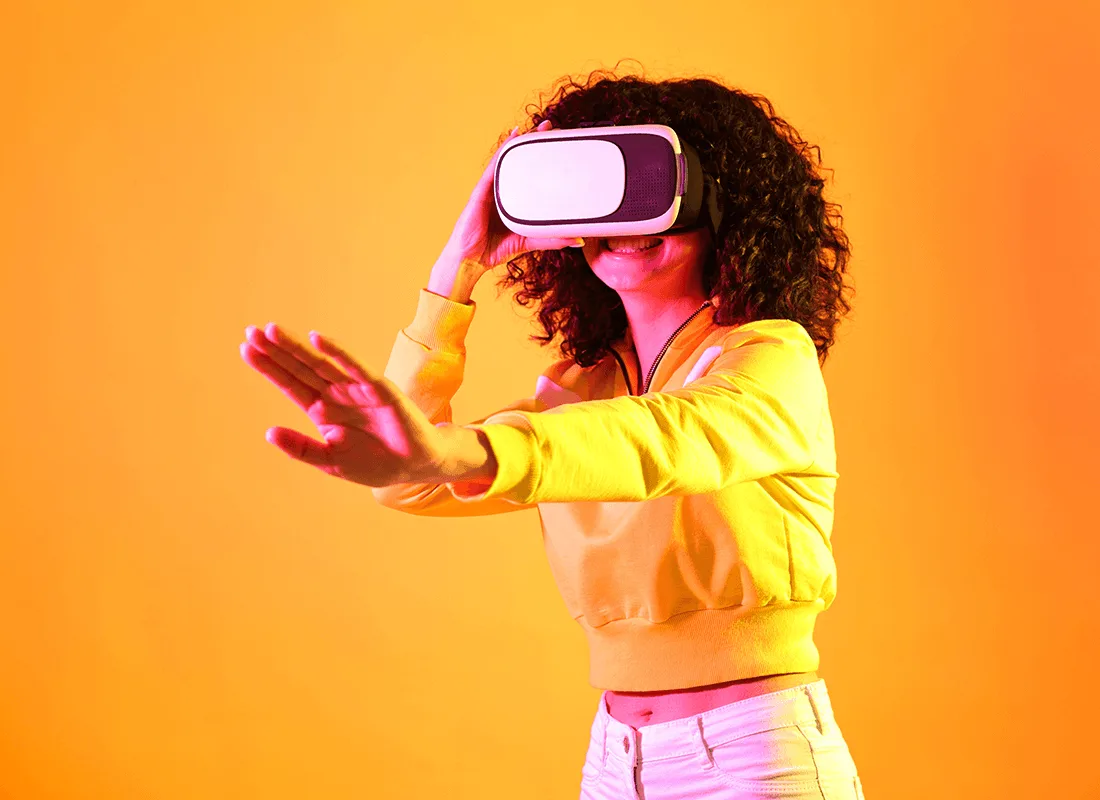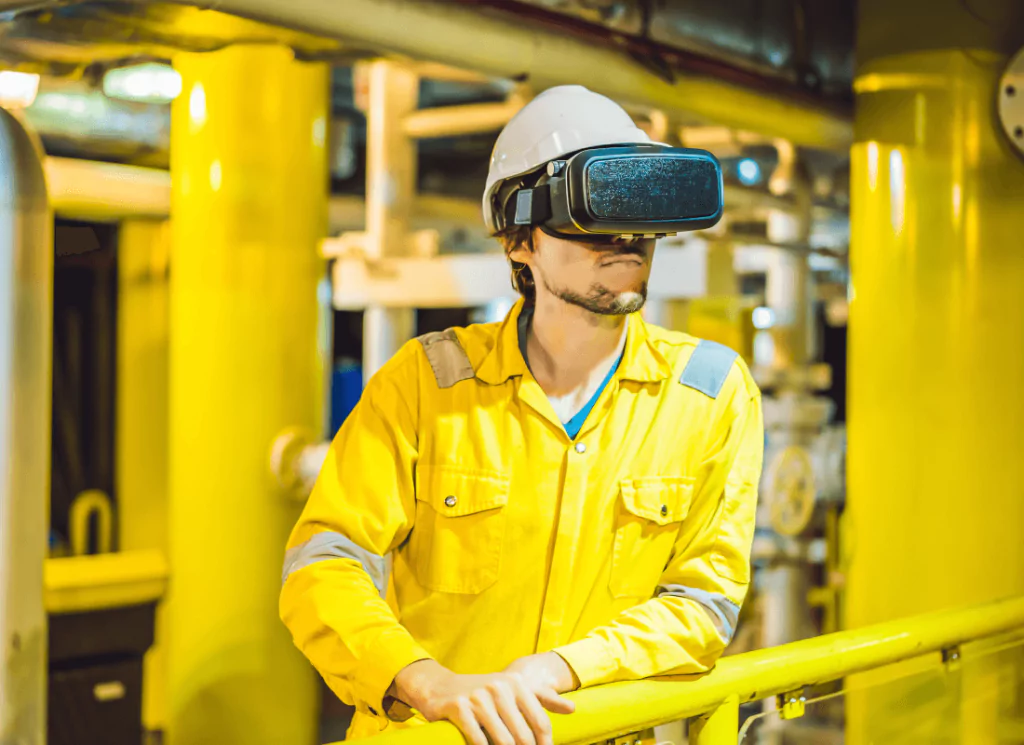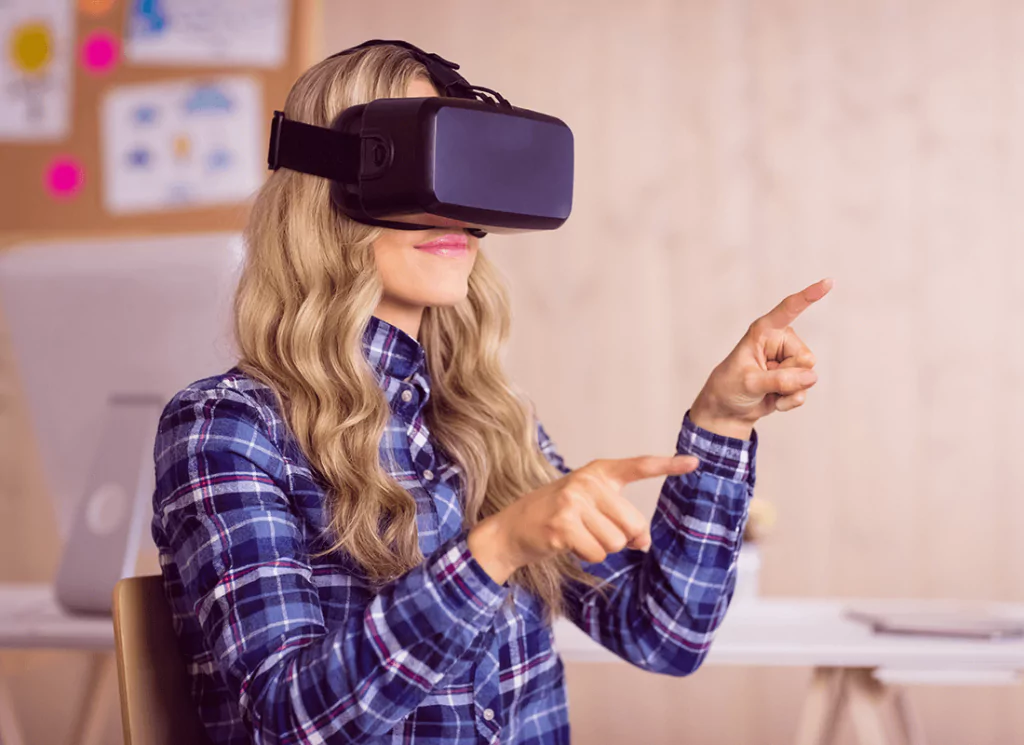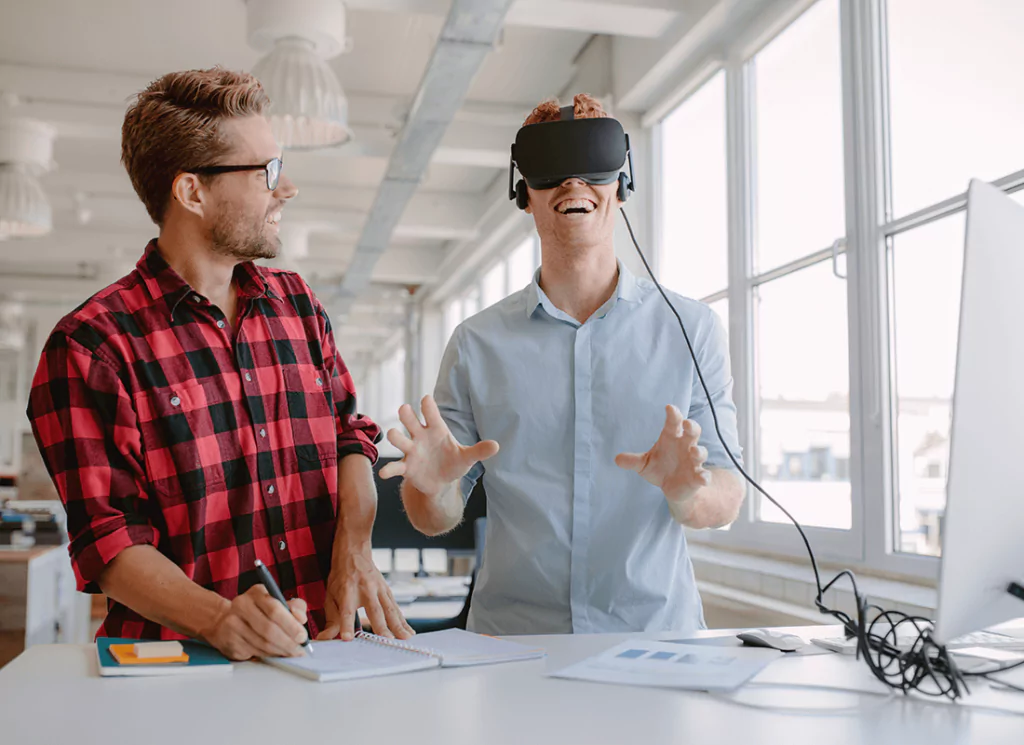
Embracing VR Training in Corporate Environments
In the ever-evolving landscape of corporate training, companies are turning to the boundless realms of virtual reality (VR) to revolutionize the learning experience. Once a concept confined to science fiction, VR has become a tangible tool reshaping corporate learning and development. Picture this: employees don sleek headsets, stepping into immersive digital worlds where they're not just passive observers but active participants in their own learning journey. In these virtual realms, the mundane constraints of traditional training methods dissolve, replaced by dynamic simulations where mistakes are not failures but invaluable learning opportunities. From mastering complex procedures in a risk-free environment to exploring distant galaxies of knowledge, VR offers an unparalleled journey of discovery. With its ability to engage the senses, evoke emotions, and foster collaboration, VR transcends the boundaries of space and time, transforming learning from a task into an adventure.
Most companies have not only embraced this innovation but also integrated VR training into their development strategies. This transition isn't just about adopting new technology; it's about leveraging VR's potential to create engaging, effective learning experiences. According to a study by PwC, VR learners are 4 times more focused during training than their e-learning peers and 1.5 times more focused than their classroom colleagues. In doing so, they are reshaping the landscape of corporate learning, where immersive experiences are defining the way modern learners consume their learning content.
Benefits of Virtual Reality Training
VR training offers many benefits that make it an increasingly popular choice for organizations seeking effective and engaging learning solutions. Below are several key advantages of VR training:
- Safe and Controlled Environment: VR training provides a safe and controlled environment for learners to practice skills and procedures without the risk of real-world consequences. This is particularly valuable in industries such as healthcare, aviation, and manufacturing, where mistakes can have serious implications. Learners can make errors, learn from them, and refine their skills in a risk-free setting, ultimately improving their confidence and competence.
- Scalability and Accessibility: VR training can be easily scaled to accommodate large numbers of learners without requiring additional physical resources. Once the initial VR environment is created, it can be deployed to multiple learners simultaneously, making it a cost-effective solution for organizations with dispersed workforces or high training demands. Additionally, VR training can be accessed remotely, allowing learners to participate from anywhere with an internet connection, further increasing accessibility.
- Personalized Learning Paths: VR training platforms often incorporate adaptive learning technologies that tailor the training experience to the individual learner's needs and skill level. Through real-time feedback and assessment, VR simulations can adjust the difficulty of scenarios, provide targeted coaching, and track progress over time. This personalized approach maximizes learning outcomes and ensures that each learner receives the support they need to succeed.
- Retention and Transfer of Learning: VR training offers immersive experiences that actively engage learners, leading to better retention of information and skills relative to conventional training approaches. Furthermore, the skills acquired in VR training often transfer more effectively to real-world situations, as learners have already practiced in environments that closely resemble their actual work environment.

Implementing VR Corporate Training: Key Considerations
Integrating virtual reality into corporate training programs involves several practical considerations to ensure successful implementation and maximize the benefits of this innovative technology. Here are some key aspects to consider:
- Needs Assessment: Conduct thorough assessment to identify training objectives, audience, and content requirements.
- Technology Infrastructure: Invest in VR hardware, ensure IT infrastructure supports VR applications.
- Content Development: Develop engaging VR simulations aligned with training objectives.
- Training Delivery: Decide on-site or remote access options balancing accessibility and cost.
- User Training and Support: Provide training on equipment usage and ongoing technical support.
- Evaluation and Feedback: Establish metrics for monitoring effectiveness and gathering learner feedback.
By carefully considering these practical aspects and addressing potential challenges, organizations can successfully integrate VR into their corporate training and unlock the full potential of this technology for workforce development.

VR Learning: Best Practices for Success
Good user experience design is what sets professional virtual reality companies apart from inexperienced ones. As an early adopter of VR learning technology, NIIT has collected several best practices that we apply to ensure top-notch VR learning experiences. Here are some to help you create a valuable and enjoyable experience for your learners.
| Do design for user autonomy. VR is great at granting autonomy to learners in the context of a learn-by-doing experience. This autonomy is a critical component of effective learning. | Do Not move the camera. This is a sister point to leveraging user autonomy. When we take control of the viewing POV in virtual reality, users find it alarming, and almost invariably experience motion sickness. |
| Do structure your training around concrete tasks. VR is a technology built for realistic practice. Use it! | Do Not use teach-by-telling methods. Teach-by-telling methods of learning do not work. Full stop. People will reluctantly accept bad learning experiences in face-to-face and eLearning, thanks to the years we all spent in classrooms as kids and in terrible eLearning as adults. People will not tolerate these methods in VR. |
| Do conduct end user tests with real end users. We’ve found that whenever a new technology is emerging, it is critical to test products with end users. It not only helps create extremely usable products, but also gives you ammunition to demonstrate that learners like, and often prefer, these immersive experiences. | Do Not treat stakeholder preference as a stand-in for real end users. End users compare training against actual training experiences they have had. Stakeholders judge against imaginary experiences they wish existed. To use an Americanism, don’t make the best the enemy of the good. |
To get a more detailed view of the best practices, download our whitepaper.

Case Study: Successful VR Training Program
- Challenge: Our client, an insurance company, sought to empower claims handlers with the necessary medical expertise and negotiation skills to effectively address injury and accident-related claims. Recognizing the importance of empathy in delivering fair settlements and improving customer satisfaction, they aimed to immerse handlers in scenarios resembling real accident situations to better understand and relate to customer experiences.
- Solution: NIIT collaborated with the company to create an immersive 360-degree video learning module centered on investigating and settling injury claims arising from common automobile accidents. Through lifelike scenarios and interactive tasks, claim handlers gained firsthand insights, while incorporating gamification principles to enhance engagement, authenticity, and learning outcomes.
- Result: The immersive 360-degree video-based learning helped learners to apply their practical knowledge to real-life scenarios and increased engagement with 100% adoption within 3 weeks of the course launch. The learners were able to learn from real-life-like experiences in a safe environment.
To learn more, download the case study.
VR Training & Other Modern Learning Experiences with NIIT
NIIT has been a pioneer in championing VR technologies in the learning field, creating unique VR training experiences across numerous industries. Leveraging our years of experience and best practices, we ensure top-notch VR learning experiences that drive positive change. Our mission-based training scenarios are designed to develop employee expertise in key skills through hands-on practice in hyper-real immersive environments and challenging, game-like situations, combined with expert coaching and feedback. Based on the principles of natural learning, this approach delivers true behavioral change and organizational readiness. We deliver meaningful learning experiences at an affordable cost without tedious and complex technology integrations through proven instructional design, powerful technology partnerships, and a customized digital reality roadmap.
Discover why leading companies trust us to deliver.